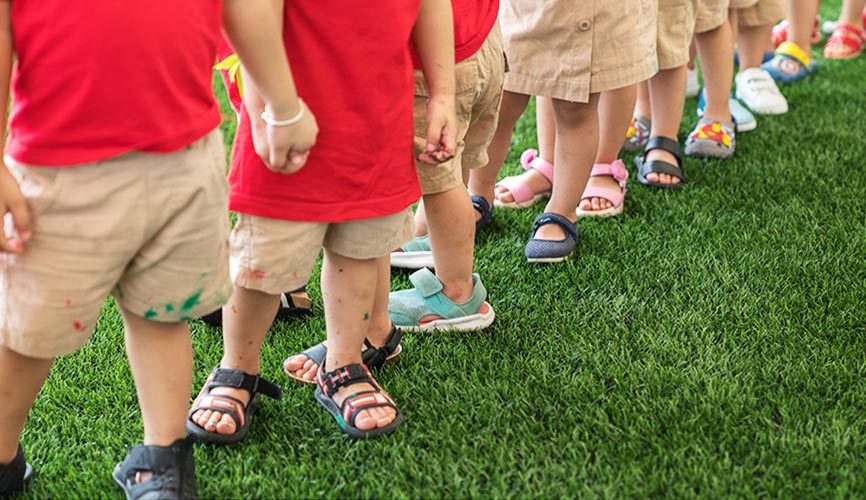Taking Turns
Introduction
Does your child know how to take turns and wait for a turn? These skills play an important role in helping children form friendships and maintain positive peer connections in kindergarten. The turn-taking activities featured below will help your child develop important life skills such as self-regulation, impulse control and patience. So let's get started!

Activity
When children learn how to take turns, they learn the basic rhythms of give and take between people. They also learn how to WAIT, which requires a lot of self-control for the under-five set!
The more comfortable your child is with waiting, the more successful he or she will be at turn-taking.
Learning to wait requires more than patience. Turn-taking requires young children to focus, pay attention over a period of time and keep it together while waiting for the payoff or reward. This isn't always easy for adults. Imagine how difficult it must be for our early learners!
Young children will need a lot of practice and encouragement to succeed at this activity. So start slowly, stay positive and make it fun with some of these simple strategies:
- Use the phrases "My Turn" and "Your Turn" so that your child will know whose turn it is.
- Tap your chest and say “My Turn.” Then ask your child to tap his or her chest and say "My Turn." The physical act of tapping may make it easier for your child to learn the turn-taking concept.
- Use games to help young children hone their turn-taking skills. Start with a simple game such as rolling a ball back and forth while incorporating the phrases "My Turn" and "Your Turn."
- Build a block tower and take turns adding blocks.
- Play classic card games such as "War" and board games such as Candyland. "War" teaches children how to follow rules, take turns without making other players wait too long and win and lose graciously.
- Practice turn-taking on the playground: When your child plays with other children, there are many opportunities to practice taking turns and waiting. Children must wait for a turn on the slide, for an available swing or for a chance to climb on the monkey bars. Be sure to teach your child how to ask for a turn. Offer examples such as: “Can I swing when you are done?" and "Please wait, I’m not done with my turn." Guidance like this can lead to positive social interactions and help your child form and nurture friendships.
- Use a timer. Sometimes it's helpful to use a timer to keep things "fair"— a big issue for little people! I like to start out as the adult who gets a very short turn (10-15 seconds) compared to the child’s longer turn (30 seconds). As the turn-taking progresses, I gradually make the turns more equal in length and then transition to turn-taking between two children.

